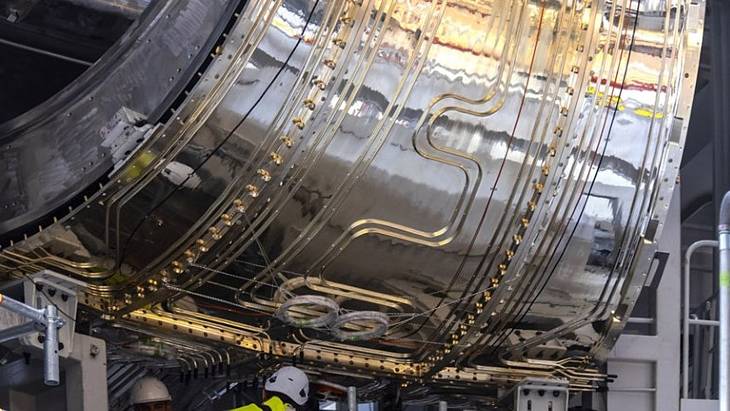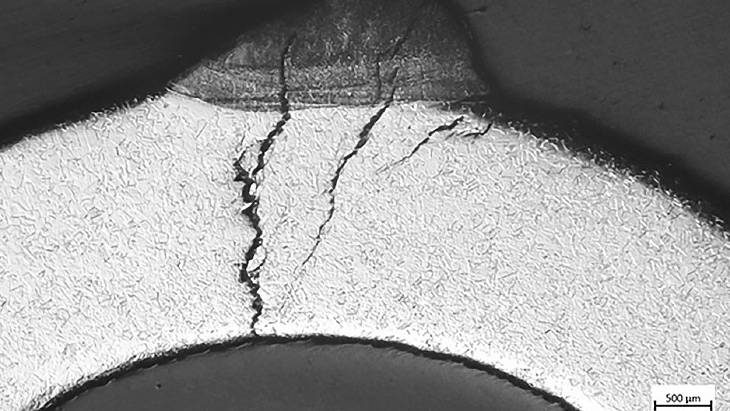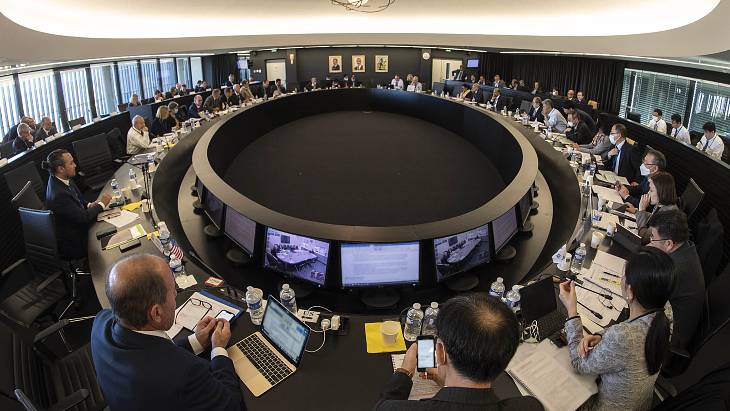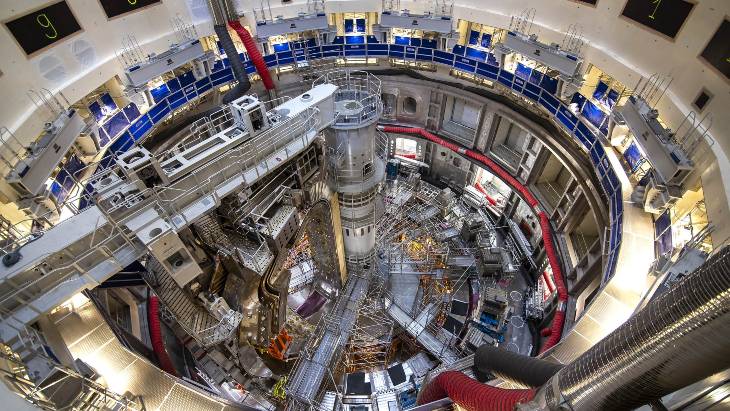The director general of ITER, Pietro Barabaschi, said: "If there is one good thing about this situation, it is that it is happening at a moment we can fix it. The know-how we are acquiring in dealing with ITER's first-of-a-kind components will serve others when they launch their own fusion ventures. It is in ITER's nature and mission, as a unique and ambitious research infrastructure, to go through a whole range of challenges and setbacks during construction. And it is therefore our task and duty to promptly inform the engaged scientific community so that they will take precautions when dealing with the same type of assemblies."
ITER is a major international project to build a tokamak fusion device in Cadarache, France, designed to prove the feasibility of fusion as a large-scale and carbon-free source of energy. The goal of ITER is to operate at 500 MW (for at least 400 seconds continuously) with 50 MW of plasma heating power input. It appears that an additional 300 MWe of electricity input may be required in operation. No electricity will be generated at ITER.
Thirty-five nations are collaborating to build ITER - the European Union is contributing almost half of the cost of its construction, while the other six members (China, India, Japan, South Korea, Russia and the USA) are contributing equally to the rest. Construction began in 2010 and the original 2018 first plasma target date was put back to 2025 by the ITER council in 2016.
The vacuum vessel thermal shields are about 20 mm thick and contribute to insulating the superconducting magnet system operating at 4K, or minus 269°C. ITER said that in November 2021 helium tests detected a leak on an element of the vacuum vessel thermal shield that had been delivered in 2020. The cause was found to be stress caused by the bending and welding of the cooling fluid pipes to the thermal shield panels "compounded by a slow chemical reaction due to the presence of chlorine residues in some small areas near the pipe welds".
This had caused "stress corrosion cracking", ITER said, "and over time, cracks up to 2.2 mm deep had developed in the pipes".

A total of approximately 23 kilometres of piping are welded to the surface of the thermal shield panels. An example of the piping on a vacuum vessel thermal shield panel is clearly visible in this photo, which shows a vacuum vessel module in pre-assembly tooling (Image: ITER)
 Investigative techniques (high-resolution CT scanning, scanning electron microscope, energy-dispersive X-ray spectrometer, and metallographic observation) revealed cracks in thermal shield cooling pipes such as the ones pictured here, 2.2 mm deep and crossing the full width of the pipe (Image: ITER)
Investigative techniques (high-resolution CT scanning, scanning electron microscope, energy-dispersive X-ray spectrometer, and metallographic observation) revealed cracks in thermal shield cooling pipes such as the ones pictured here, 2.2 mm deep and crossing the full width of the pipe (Image: ITER)
Although this might have been a one-off problem, it could also have affected all thermal shield components, with Barabaschi saying they had to assume it was a wider problem, explaining: "The risk is too high and the consequences of a leaking thermal shield panel during operation are too dire."
He said that it would be too difficult to fix the issue on the assembled module in the pit so "we have to lift out the installed module and disassemble it in order to proceed with the repairs. We are exploring different possibilities, from on-site repair to re-manufacturing in an outside facility, possibly with different pipe attachment options."
The issue discovered with the vacuum vessel sector was that when the component's four individual segments were welded together the "deviations from nominal dimensions were more substantial than the specified limit in different locations on the component’s outer shell", explained ITER. "These dimensional non-conformities modified the geometry of the field joints where the sectors are to be welded together, thus compromising the access and operation of the bespoke automated welding tools."
There had been plans to fix the issue in the assembly pit, but Barabaschi said that "the thermal shield issue has now changed the perspective … as we need to disassemble the module to fix the thermal shield piping, the question of whether or not to repair the vacuum vessel sector in the pit becomes irrelevant. We have no other solution but to remove it".
Repair strategies are being refined at the moment with assessments of the impacts on timings and costs being drawn up and vacuum vessel assembly put on hold. ITER told World Nuclear News in July that it was already planning to revise its schedule, which most recently had been for first plasma in 2025 and the start of deuterium-tritium operation in 2035. That revision to timings was partly blamed on the impact of the COVID-19 pandemic. Longtime director general of the project, Bernard Bigot, died in May and the revision was said not likely to be agreed until April 2023 - to allow time for the new director general to be appointed and decide on the timetable revision.

The ITER council, which features respresentatives from the countries involved in the ITER project, met in a hybrid format on 16 and 17 November (picture, above, supplied by ITER) and urged for the necessary repair work to start as soon as possible. The council also urged "the ITER Organisation and Domestic Agencies to work together to ensure an appropriate project-wide quality culture to prevent any recurrence of such issues". ITER said that the council members also reaffirmed their strong belief in the value of the ITER mission, and resolved to work together to find timely solutions to facilitate ITER's success.






_91467.jpg)
_47120.jpg)
_16439.jpg)





